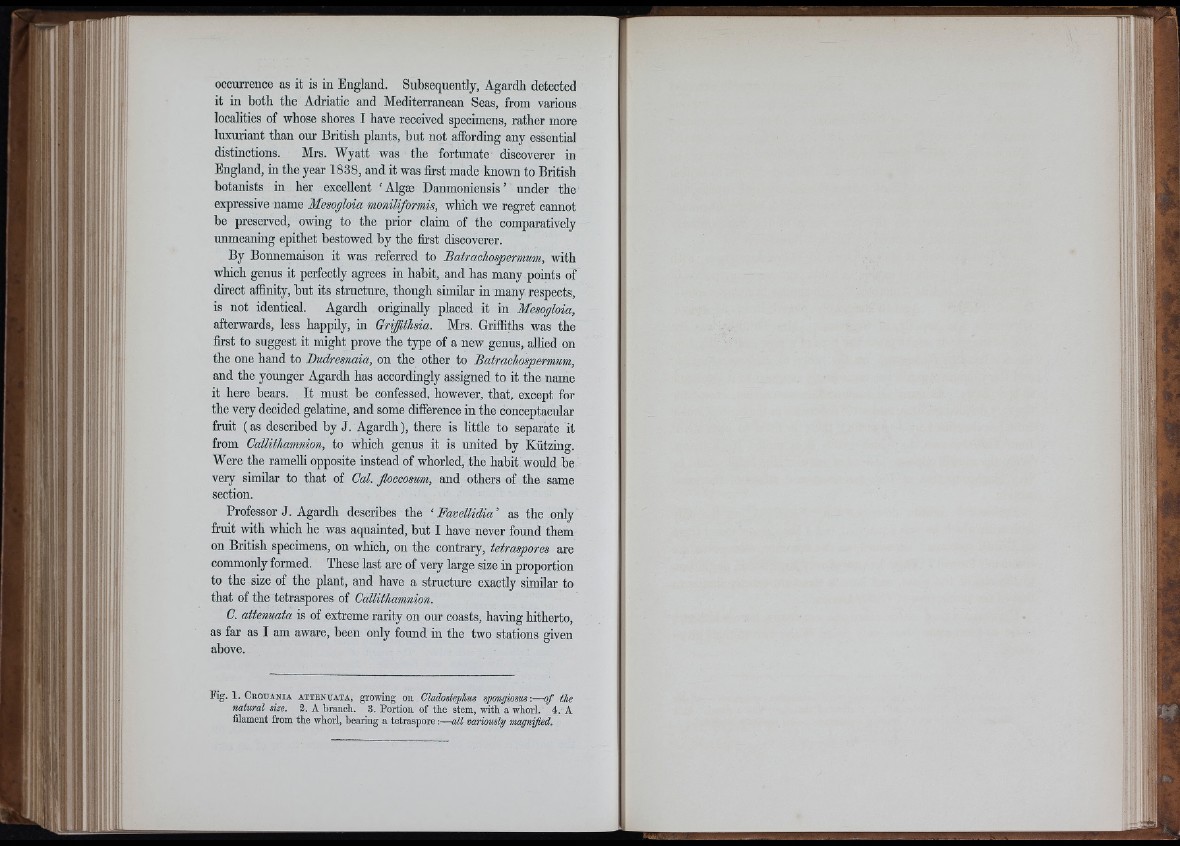
I'!
occurrence as it is in England. Subsequently, Agardh detected
it in both the Adriatic and Mediterranean Seas, from various
localities of whose shores I have received specimens, rather more
luxuriant than our British plants, but not affording any essential
distinctions. Mrs. Wyatt was the fortunate discoverer in
England, in the year 1838, and it was first made known to British
botanists in her excellent ‘Algæ Danmoniensis’ under the
expressive name Mesogloia moniliformis, which we regret cannot
be preserved, owing to the prior claim of the comparatively
unmeaning epithet bestowed by the first discoverer.
By Bonnemaison it was referred to Batraohospermum, with
which genus it perfectly agrees in habit, and has many points of
direct affinity, but its structure, though similar in many respects,
is not identical. Agardh originally placed it in Mesogloia,
afterwards, less happily, in Griffithsia. Mrs. Griffiths was the
first to suggest it might prove the type of a new genus, allied on
the one hand to Dudresnaia, on the other to Batrachospermum,
and the younger Agardh has accordingly assigned to it the name
it here bears. It must be confessed, however, that, except for
the very decided gelatine, and some difference in the conceptacular
fruit ( as described by J. Agardh ), there is little to separate it
from Callithamnion, to which genus it is united by Kützing.
Were the ramelli opposite instead of whorled, the habit woidd be
very similar to that of Cat. floccosum, and others of the same
section.
Professor J. Agardh describes the ‘ Favellidia ’ as the only
fruit with which he was aquainted, but I have never found them
on British specimens, on which, on the contrary, tetraspores are
commonly formed. These last are of very large size in proportion
to the size of the plant, and have a structure exactly similar to
that of the tetraspores of Callithamnion.
C. attenuata is of extreme rarity on our coasts, having hitherto,
as far as I am aware, been only found in the two stations given
above.
Fig. 1. Crouania attenuata, growing on Cladostephus spongiosus-.— o f the
natural size. 2. A branch. 3. Portion of the stem, with a whorl. 4. A
filament from the whorl, bearing a t e t r a s p o r e ”